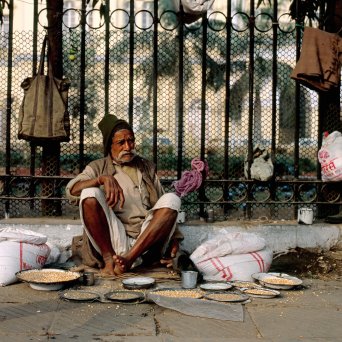- About
- Topics
- Picks
- Audio
- Story
- In-Depth
- Opinion
- News
- Donate
- Signup for our newsletterOur Editors' Best Picks.Send
Read, Debate: Engage.
| topic: | Discrimination |
|---|---|
| located: | India |
| editor: | Hanan Zaffar |
Last month, in the central Indian state of Rajasthan, a nine year old boy belonging to the Dalit community was beaten to death by his teacher for drinking water from a pot meant for the people from the “upper caste” community. The incident is not one of a kind. Violence against Dalits, formerly known as “untouchables” who are at the lowest stratum of a rigid caste-based social hierarchy in India is a norm in the country.
This violence is often peculiar as people belonging to these marginalised castes are beaten or even killed for trivial things, like riding a horse, or keeping a moustache, or drinking water from wells meant for people of “higher” castes. In the same vein, people belonging to the tribal communities, often known as “Adivasis,” also face similar violence.
The violence seems to be on a continuous uptick as is evident in the crime report released by the government’s National Crime Records Bureau (NCRB). Last year, the law-enforcement agencies in the country recorded close to 60,000 cases of atrocities against Dalits and Tribals. The report claims that crimes against Dalits and Adivasis rose by 1.2 percent and 6.4 percent respectively compared to 2020. The north Indian state of Uttar Pradesh alone, ruled by the Hindu nationalist Bharatiya Janata Party (BJP), witnessed more than 13,000 cases of violence against Dalits - the highest in the country and accounting for more than 25 percent of total cases.
The violence against these marginalised sections of the society fundamentally stems from the traditional social structure in India, which divides society into four castes. People from so-called “upper castes” are presented as those with higher status, and somewhat possessing authority over those lower in the caste system. Since Dalits and Tribals don't fall in any of those four castes, they are deemed in this system as “outcasts” or “untouchables.”
This very stringent caste system has historically dictated the treatment of Dalits and Tribals, wherein these people are not allowed to do anything which is specific to upper castes, like drinking from the same well, visiting the same temple or sitting at the same level. Not conforming to such rules would call for a violent response from the upper castes. Despite affirmative actions post-independence, the discrimination against Dalits and Tribals still persists in the country. The discrimination on many occasions translates to crimes committed by those belonging to upper castes against people of unprivileged, discriminated and historically persecuted backgrounds.
The state not only seems unconcerned with dealing with discrimination against these communities, but also complacent on many occasions: 96 percent and 95 percent of cases of crimes against Dalits and Adivasis respectively are pending trials. The ruling Hindu nationalist Bharatiya Janata Party, which relies on religion as a driving force to maintain political power, does not appear to be taking the crimes against Dalits and Tribals seriously since many believe would believe it to be contrary to Hindu ideology - something they cannot afford as they depend on the majority community for votes.
Even though the government claims to be working in the direction of annihilating caste-based inequality, the country appears to be sticking to its ancient roots of discrimination, ignoring the equality-based credentials of its constitution.
Photo by Evgeny Nelmin

